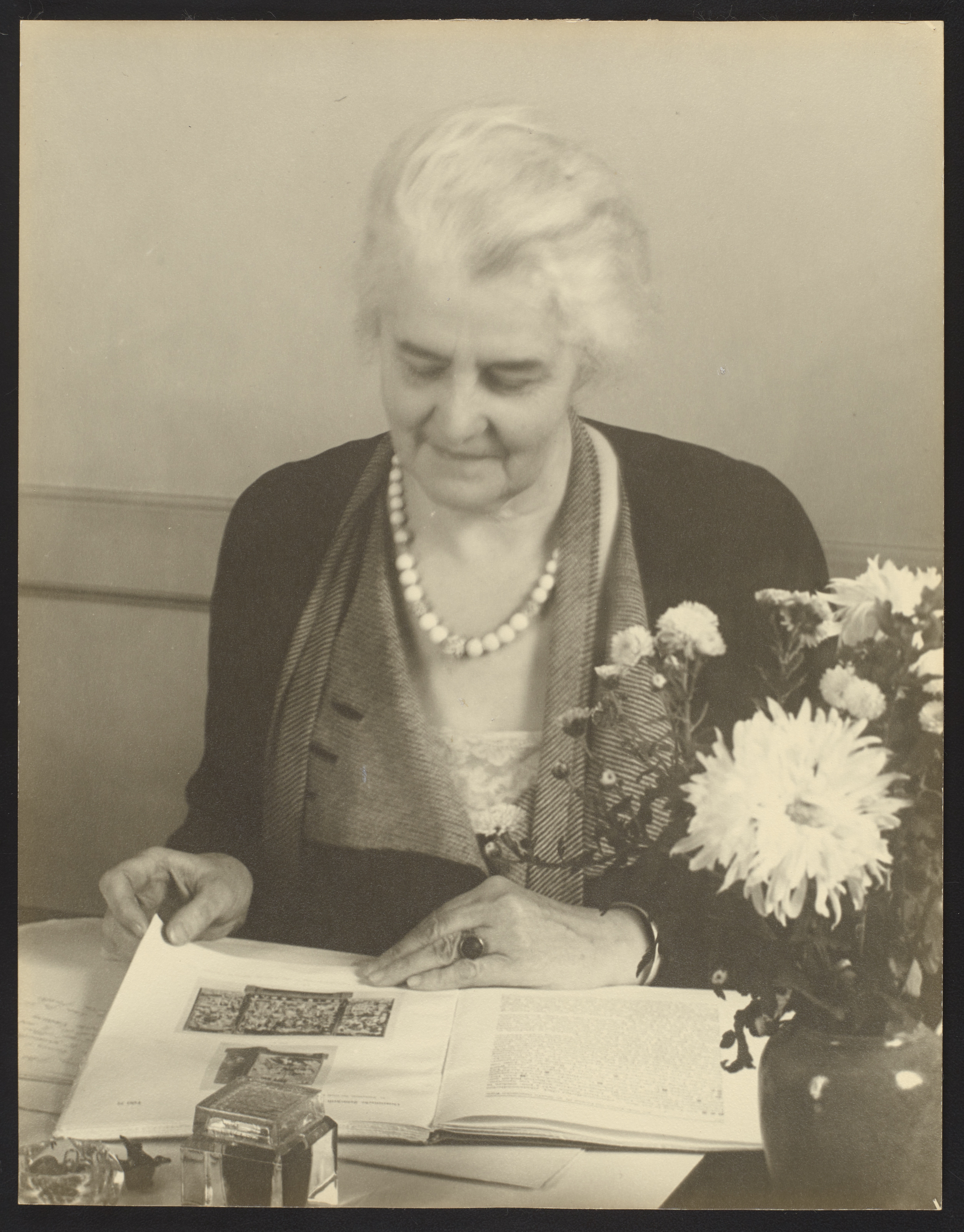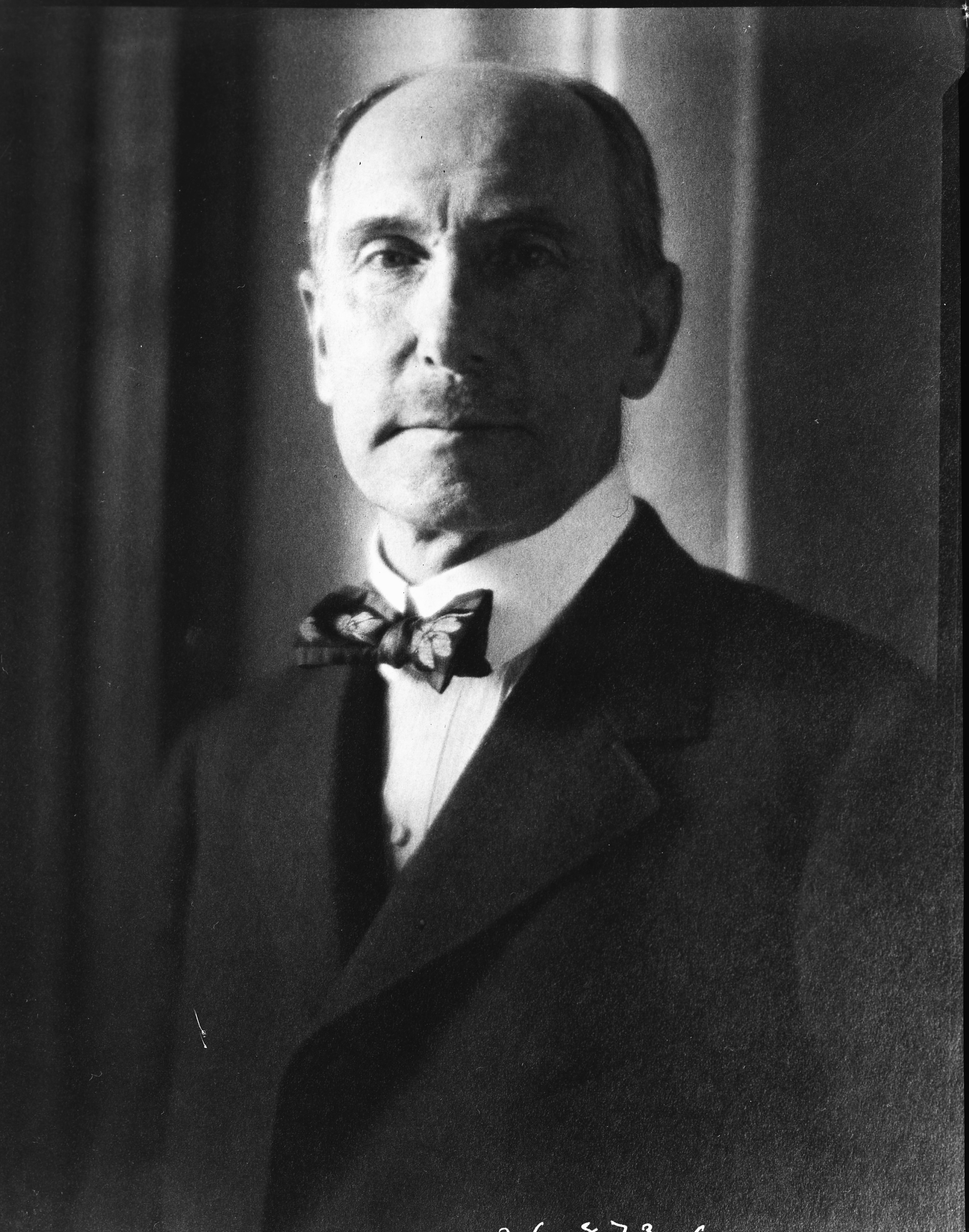On May 2, 1923, the Freer Gallery of Art, the newest Smithsonian museum and the first dedicated to art, opened on the National Mall in Washington, D.C. The collection was created and donated by Charles Lang Freer, an industrialist from Detroit, Michigan. The transfer to the nation’s capital from the Midwest was managed by Freer’s assistant curator, Grace Dunham Guest (1872-1962). Guest was from a Detroit working-class family and was a school teacher for a number of years. Entirely self-educated and interested in art, she also began to supplement her income by caring for Freer’s growing art collection. She became an expert in Asian art and developed into a highly qualified curator. Freer donated his treasures to the Smithsonian in 1906, and designs for a building to house them were completed. Construction was disrupted by World War I, and Freer died in 1919 before his museum opened. Guest then assumed responsibility for the actual transfer of the collection to Washington and its installation in the new building. She moved with the collection in 1922 and handled the day-to-day care of art works ranging from ceramics to painted screens to oil paintings to an entire room.

The Freer Gallery’s founding director, John Ellerton Lodge, wasn’t sure he wanted to direct the new gallery and did not move to Washington until the museum opened. Initially he was only given the title of curator, not director, and he had concerns about how Freer had run his museum. So it was left to Guest to oversee movement of the collection into secure storage and to choose and hang pieces in the exhibit halls. Guest was appointed a Smithsonian assistant curator, and set about making preliminary plans and final decisions. She and Lodge corresponded almost daily over every detail of the work, but ultimately Guest made the final decisions on site. She wanted to please both “historic and aesthetic sensibilities,” she wrote in a 1927 news article. At the same time, she produced a steady stream of scholarly articles on Asian art, culminating in her Shiraz painting in the sixteenth century (1949). On top of all of these responsibilities, Guest taught at the Madeira School, then located in DuPont Circle.
Lodge did move to Washington as chief curator of the museum when it opened in 1923. He still had reservations about the four highly competent women who had worked with Freer and managed to open the new gallery without him. In her 2021 dissertation, “‘Wonderful and Alarming Women’: Establishing the Freer Gallery of Art, circa 1920,” Lillian Wilson discussed the four women who were central to getting the museum up and running, curator Guest, curator Katherine Nash Rhoades, philanthropist Louisine Havemeyer, and board member Agnes Ernst Meyer. Freer had given each of them an unusual degree of autonomy for women of that era. Wilson also notes, however, that as female curators, Guest and Rhoades made significantly less money than their male counterparts.*

In 1938, Lodge was finally given the title of museum director and promptly promoted Grace Dunham Guest from curator to assistant director, citing her pivotal role in getting the new museum opened. This was much earlier than I had expected to see a woman museum manager at the Institution. Women advanced in clerical duties and libraries, but little else, so I was surprised to see Guest listed as assistant director in 1938! I’d never heard of her, so I read through her voluminous correspondence with Lodge in the years leading up to 1923 and gained great respect for her contributions. Wilson’s dissertation now provides much more information on these important but little-known Smithsonian women.

*Wilson, Lillian. "'Wonderful and Alarming Women': Establishing the Freer Gallery of Art, Circa 1920." PhD diss., Wayne State University, 2021.
Related Resources
- Freer Gallery of Art, history, Smithsonian Institution Archives
Produced by the Smithsonian Institution Archives. For copyright questions, please see the Terms of Use.

Leave a Comment